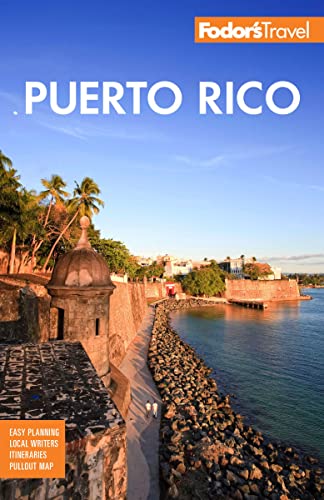The Masks of Puerto Rico
Puerto Rico's masks are true expressions of folk art, following a tradition that dates back to early 17th-century Spain.
During the Fiestas de Santiago Apóstol (Saint James Festivals), brightly dressed vejigantes (pronounced "veh-hee-GAN-tays") represented the Devil in a holy battle between good and evil. Their costumes consisted of long robes and grotesque masks, and they would wave cow bladders, or vejigas, on long sticks at anyone they passed. Parading as devils, their intention was to frighten sinners to compel them to return to church for Lent.
Today, balloons and plastic bottles have replaced the cow bladders, and the now more playful masks have become one of Puerto Rico's most distinguished forms of artistic expression. One week before Ash Wednesday, vejigantes—wearing long, colorful robes and brightly painted horned masks—turn the normally placid city of Ponce into a hotbed of rowdiness. The masked mischief-makers prowl city streets, scaring and fascinating anyone in their path.
Island Art
The best hand-designed masks in Puerto Rico come from three parts of the island: Ponce, Loíza (just east of San Juan), and Hatillo (on the northwest coast). Mask making is a family tradition in these towns, and styles are passed down for generations. For a fine souvenir and a memorable experience, head to one of the local workshops. Small masks cost $20–$30; larger ones by well-known artisans may cost more than $1,000.
Ponce
Ponce’s vejigante masks are made of papier-mâché and are most prominent during the February carnival. Many have African and Native American elements; it's even possible to detect influences from ancient Greece and Rome. All masks have at least two horns, but most have several protruding from the forehead, chin, and nose. Some antique masks have more than 100 horns. At the beginning of the 20th century, masks were usually painted red with yellow dots or vice versa; today, they come in every imaginable color and pattern.
Where to Go: One of the best-known mask-making families is the Caraballo family from Playa de Ponce near El Ancla restaurant . To purchase a mask, just show up at the door to their home; if someone is there, you'll be allowed to peruse the workshop. Your best chances for success are in February leading up to Ponce's carnival. Caraballo family.24 San Tomas, Playa de Ponce.
Loíza
Founded by freed and escaped African slaves, Loíza is known as the island's Capital of Traditions for its bomba and plena music and dance and its traditional Taíno and African cuisine. Loíza's masks are created from coconut husks, and the individual shape of each determines the face and placement of the nose and lips. The teeth are made of bamboo, and the tongue is made of coconut shell.
Where to Go: For generations the Ayala family, whose workshop sits just east of town, has been the most renowned of Loíza’s mask makers. Their masks appear during the Saint James Festival of Loíza each July. Artesanias Castor Ayala.Rte. 187, Km 6.6, Barrio Mediana Alta787/564–6403.
Hatillo
Hatillo was founded in 1823 by settlers from the Canary Islands. These isleños, in honor of King Herod's soldiers, the first Christian martyrs or Holy Innocents, would dress head-to-toe in costumes with a cape, hat, and mask made of fine metallic screening meant to resemble the face of a Spaniard. Today, the masked performers run through surrounding neighborhoods, joined by children, singing and dancing. The annual mask festival, Día de las Máscaras, is held every December 28.




